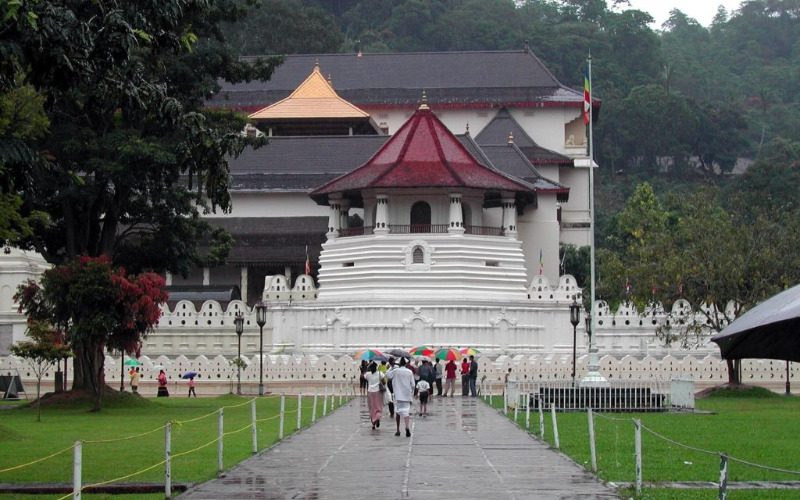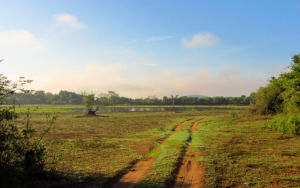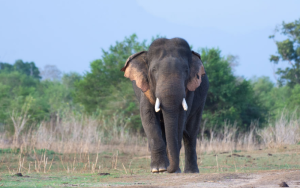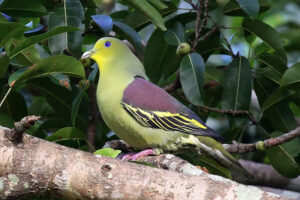The Temple of the Sacred Tooth Relic, also known as Dalada Maligawa, is one of the most sacred and venerated Buddhist temples in Sri Lanka. Located in the ancient city of Kandy, the temple is a UNESCO World Heritage Site and is considered the holiest place of worship for Sri Lankan Buddhists.
The temple houses the relic of the tooth of the Buddha, which is believed to have been brought to Sri Lanka during the 4th century. The sacred tooth relic has been the symbol of power and legitimacy for the rulers of Sri Lanka for centuries and is believed to protect the country and its people from harm. The temple is not only a place of religious importance but also an architectural marvel and a popular tourist attraction, drawing visitors from all over the world.
History of Dalada Maligawa
The history of the Temple of the Sacred Tooth Relic, also known as the Dalada Maligawa, dates back more than 2,500 years to the time of Lord Buddha. According to legend, when the Buddha was cremated, one of his teeth was saved and brought to Sri Lanka by Princess Hemamali and her husband Prince Dantha.
Over the centuries, the tooth was passed down through various kings and dynasties and eventually ended up in the possession of King Kirti Sri Rajasinha in the 18th century. The king built the original temple to house the tooth, and it became a place of great pilgrimage and worship.
However, the temple was repeatedly attacked and plundered by foreign invaders, including the Portuguese and Dutch. In the early 19th century, the British took control of Sri Lanka and established a protectorate over the temple. They undertook major renovations and restorations to the temple complex, and it was during this time that the iconic golden-roofed shrine was built.
Today, the Dalada Maligawa is one of the most important religious and cultural sites in Sri Lanka, and it continues to draw thousands of pilgrims and visitors from around the world. The temple complex has been expanded and modernized over the years, but it remains a powerful symbol of Sri Lanka’s rich cultural heritage and spiritual traditions.
The architecture of the Temple
The Dalada Maligawa, or the Temple of the Sacred Tooth Relic, is a magnificent example of Kandyan architecture. The temple’s layout and design reflect the ancient principles of Sinhalese architecture, which harmoniously blends natural elements with man-made structures.
The temple complex consists of several buildings and courtyards, including the main shrine room, the Audience Hall, the Royal Palace, and the Temple of the Tooth Museum. The buildings are constructed using traditional materials such as timber, brick, and clay tiles, and are decorated with intricate carvings, paintings, and sculptures.
One of the most striking features of the temple’s architecture is the use of the octagonal shape. The shrine room is an octagonal structure with a conical roof that rises to a height of 108 feet. The number 108 is significant in Buddhism, representing the 108 virtues that a person must possess to achieve enlightenment.
The main entrance to the temple is through the massive wooden doorway of the Octagon, which is flanked by two stone elephants. The doorway leads to a courtyard with a striking moonstone, a semicircular stone slab with intricate carvings that symbolize the Buddhist teachings of suffering and the path to enlightenment.
Overall, the architecture of the Dalada Maligawa is a masterpiece of traditional Sinhalese craftsmanship, showcasing the richness and beauty of Sri Lankan culture.
Significance of the Tooth Relic
The Tooth Relic, also known as the Sacred Tooth Relic, is the centerpiece of the Dalada Maligawa and is considered to be one of the most important Buddhist relics in Sri Lanka. The relic is believed to be the left canine tooth of Lord Buddha, which was retrieved from his funeral pyre in India in the 4th century BC.
The significance of the Tooth Relic is deeply ingrained in Sri Lankan history and culture. It is believed that whoever possesses the relic holds the right to rule the country. As a result, the Tooth Relic has been the subject of many battles and has been moved from place to place over the centuries to protect it from invaders.
Legend has it that the Tooth Relic was brought to Sri Lanka in the 4th century AD by Princess Hemamali and her husband, Prince Dantha, who were the son and daughter of King Guhasiva of Kalinga (now modern-day Orissa, India). They hid the Tooth Relic in their hair and brought it to Sri Lanka to protect it from those who sought to destroy it.
Since then, the Tooth Relic has been enshrined in various temples across Sri Lanka, with the Dalada Maligawa being the most prominent among them. It is believed that the Tooth Relic has the power to protect and bless the country, and it is therefore highly revered by Buddhists in Sri Lanka and around the world.
Every year, thousands of devotees flock to the Dalada Maligawa to pay homage to the Tooth Relic during the Esala Perahera festival. The festival is a spectacular display of culture and religion, with elaborate processions, traditional dances, and colorful costumes. It is a testament to the enduring significance of the Tooth Relic and the role it plays in Sri Lankan culture and tradition.
Rituals and Ceremonies at Dalada Maligawa
Rituals and ceremonies play an essential role in the daily operations of the Dalada Maligawa. The temple follows a strict schedule of ceremonies that have been passed down for generations.
One of the most important rituals is the morning and evening ‘Pooja’ ceremony, which is performed to honor the Sacred Tooth Relic. The Pooja ceremony is a vibrant and colorful event, with drumming, chanting, and the burning of incense.
Another significant ritual is the annual Esala Perahera festival, which is a ten-day event that takes place in July or August. The festival attracts thousands of visitors to the city of Kandy and is considered the most important religious event in Sri Lanka. The festival includes parades of decorated elephants, traditional dancers, and drummers. The highlight of the festival is the night-time procession, which features the Sacred Tooth Relic being carried on the back of a majestic elephant.
During the Perahera festival, the Temple is illuminated with thousands of lights, and there are many stalls selling traditional Sri Lankan food and handicrafts. The festival is a colorful and vibrant celebration of Sri Lankan culture and religion.
Apart from these, the Dalada Maligawa also performs other ceremonies such as the ‘Vesak Pooja’ ceremony, which is held in May to celebrate the birth, enlightenment, and death of the Buddha. The ‘Poson Pooja’ ceremony, which is held in June, commemorates the arrival of Buddhism to Sri Lanka.
Overall, the rituals and ceremonies at the Dalada Maligawa are an essential part of Sri Lankan culture and tradition, and they are a testament to the deep connection between Buddhism and the Sri Lankan people.
Visiting Dalada Maligawa
Visiting Dalada Maligawa is a unique experience that should not be missed by anyone traveling to Sri Lanka. Here are some things to keep in mind when planning your visit:
Location and Opening Hours
The temple is located in the heart of Kandy, Sri Lanka’s second-largest city. It is open to visitors daily from 5:30 am to 8:00 pm, although the best time to visit is early in the morning or in the evening when the temple is less crowded.
Dress Code
As a place of religious worship, visitors are expected to dress modestly and respectfully. Both men and women should cover their shoulders and knees, and shoes must be removed before entering the temple.
Tickets and Queues
There is no entrance fee to the temple, but visitors are required to obtain a free ticket from the entrance gate. Queues can be long, especially during peak season, so it is advisable to arrive early to avoid waiting in line.
Etiquette
When visiting Dalada Maligawa, it is important to remember that it is a place of great spiritual significance for Sri Lankan Buddhists. Visitors should be respectful and mindful of their actions. Taking photographs and videos is permitted in most areas, but visitors should not use flash photography or disturb those who are praying or meditating.
Visiting during Special Occasions
The temple is particularly busy during special occasions, such as the annual Esala Perahera festival, which takes place over ten days in July or August. During this festival, the tooth relic is paraded through the streets of Kandy on the back of a majestic elephant, accompanied by traditional dancers and drummers. This is an experience not to be missed, but visitors should expect large crowds and plan their visit accordingly.
visiting Dalada Maligawa is an unforgettable experience that offers a glimpse into Sri Lanka’s rich cultural and religious heritage. Visitors should be respectful and mindful of their actions, especially during religious ceremonies and festivals. By following these guidelines, visitors can make the most of their visit and gain a deeper understanding of the significance of the Temple of the Sacred Tooth Relic.
Conclusion
In conclusion, Dalada Maligawa is a significant religious and cultural site in Sri Lanka. It houses the sacred tooth relic of the Buddha and has a rich history dating back centuries. The temple’s stunning architecture is a testament to the craftsmanship of the ancient Sri Lankan people and continues to inspire visitors today. The rituals and ceremonies that take place at the temple are an integral part of Sri Lankan culture, and a visit to the temple provides a unique insight into the country’s rich heritage. Whether you are a Buddhist or not, a visit to Dalada Maligawa is a must-see attraction in Sri Lanka.
Our Recommended Accommodations
If you’re planning a visit to the Dalada Maligawa, we highly recommend staying at one of our recommended hotels. Each of these hotels provides a comfortable and convenient base for exploring the temple and the surrounding area. Plus, staying at one of our recommended hotels ensures that you have easy access to the temple and other nearby attractions.
Whether you’re looking for a luxurious five-star hotel or a cozy guesthouse, our recommended hotels offer a range of options to suit your needs and budget. And with their central locations, you’ll be just a short distance from the temple, so you can make the most of your visit.
So why not make your trip to the Dalada Maligawa even more memorable by staying at one of our recommended hotels? We’re sure you’ll love the comfortable accommodations and convenient location, making your visit to this sacred temple even more enjoyable.











